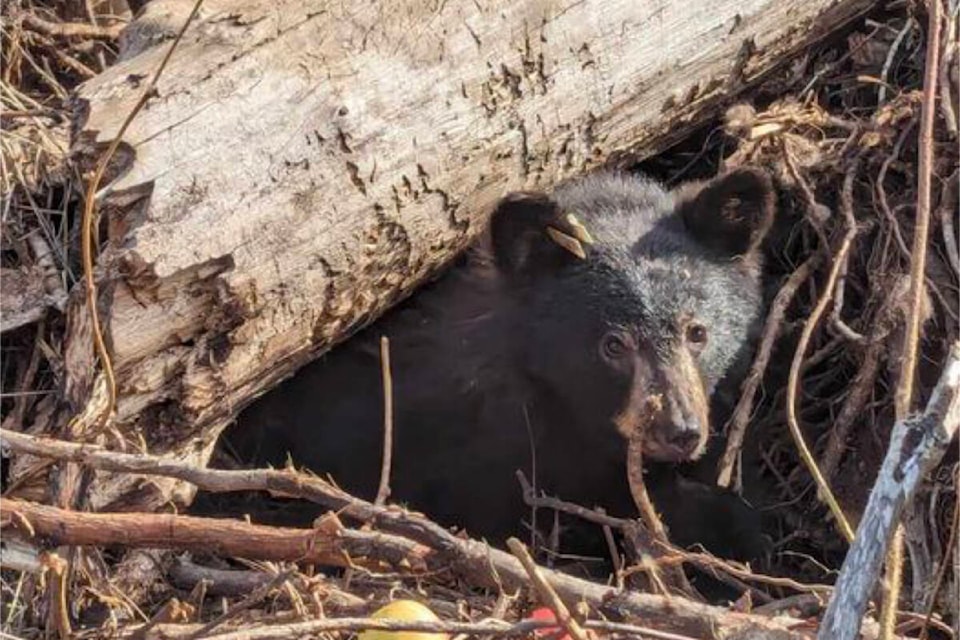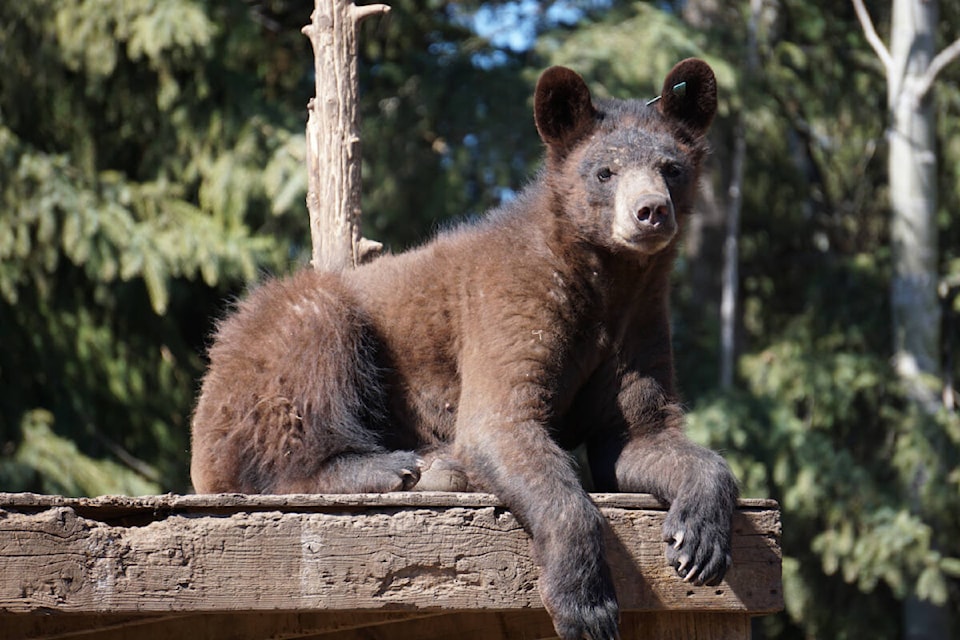Angelika Langen and her husband Peter are co-founders of the Northern Lights Wildlife Society (NLWS) sanctuary in Smithers. They operate the facility year-round with an “amazing team of family and volunteers” and take in rescued mammals and birds.
Black Press checked in with Langen on April 20 about the upcoming release of orphaned bears Hiro and Tadashi, who lost their mother along Highway 5 near Little Fort on June 23, 2023.
READ MORE: Orphaned bear cubs rescued thanks to volunteer ‘chain’
“The bears just came out of hibernation a few weeks ago,” says Langen. “They stay in the normal facility over winter here at Northern Lights for hibernation. Nearing winter we begin to reduce their food intake, as it would be disappearing in the wild, and then they go to sleep just as though they would in the woods.”
The bears were named after Disney characters Hiro and Tadashi, from the movie Big Hero 6, who are brothers who were orphaned together at a young age, just as the cubs were last year. Black Press hopes to be on site when the two yearlings are returned to the valley in May, although the location will be kept confidential to protect the young bears.
READ MORE: Checking in on orphaned bear cubs from the North Thompson
Langen says this year it is “greening up” much earlier than in previous years, and that by releasing the yearlings as things are flourishing, they have a much better chance of survival. “If we can return them as things are becoming green, they will receive better nourishment and nutrients to prepare them, especially during a potential drought or fire season like last year.”
This year the sanctuary has an unprecedented 124 bears in its care, with only seven volunteers to care for them. Langen describes the workload as “challenging” and “hair straight back.”
“It’s an incredibly large amount of animals, almost double the intake of bears than we have had before. It’s due to a combination of factors. It was a really bad year with the droughts last year and people are just not capable or willing to co-exist. People leave the attractants out and the bears become territorial over the food source and are killed. In turn we end up with the cubs.”
She adds that government in most regions of B.C. has now taken the stand that conservation officers “no longer deal with cubs because they are not a safety risk for the public” and they are then directly turned over to NLWS until they are rehabilitated or re-wilded.
“We often hear the comments about there being ‘enough black bears in the province’ and how it’s a waste of our time and resources to re-habituate black bears. Our teams at NLWS doesn’t agree with that. We feel that each life has value and that humans should also ‘bear the responsibility,’ as our new website campaign promotes. People need to change how they do things.
“The new program we’ve just started is Bear the Responsibility, which is aimed at lowering the number of bears we are taking in each year.”
Langen feels that if people managed their fruit trees, garbage, birdseed, and compost it would make a big difference. If a mother bear with cubs finds those sources once, they will return, and eventually the mother could be killed, leaving the babies behind.
There are basic ways that even municipalities and government can lead by example, Langen says, such as by not planting decorative fruit trees on town or government land unless they are properly cared for. Other measures, such as seeding natural food sources on Crown land near urban or residential areas, could provide wildlife with food sources, and could easily be accomplished when replanting recently-logged areas.
“You have no idea how often last year we came to a place where there was a bear cub to rescue, right next to a fruit tree full of apples, and residents wondering why the bear is there. Even though conservation officers had told us for years that people don’t manage their attractants, it was a real eye-opener. Being there and seeing it was dramatic. Towns that plant crab apple trees because they are so pretty in the spring are surprised when the bears show up, but no one harvests the little apples. It’s really a problem.
“We want to help wherever we can and minimize our footstep. There are many ornamental trees that don’t produce fruit. If you don’t want the apples, exchange the tree for something else.”
The frustration is evident in Langen’s voice as she looks to the future and describes how people feel threatened by a bear and phone conservation officers about a mother bear lured in by fruit or other attractants, but don’t want the cubs shot and expect the NLWS to continue to pick them up. Her concern is that this continual cycle is not sustainable without additional volunteers and resources, which is why they are asking everyone to Bear the Responsibility. The society is now ordering four 800-pound bins of apples per week and buying carrots, pellets, and other feed to sustain the bears.
To avoid mixing genetics and keep population numbers up, the bears are destined to return to the area where they were rescued. The expense incurred to rehab the bears is “not sustainable,” according to Langen.
If you would like to volunteer, donate, or learn more about the NLWS, visit their newly launched website at https://www.wildlifeshelter.com/bear-the-responsibility.

